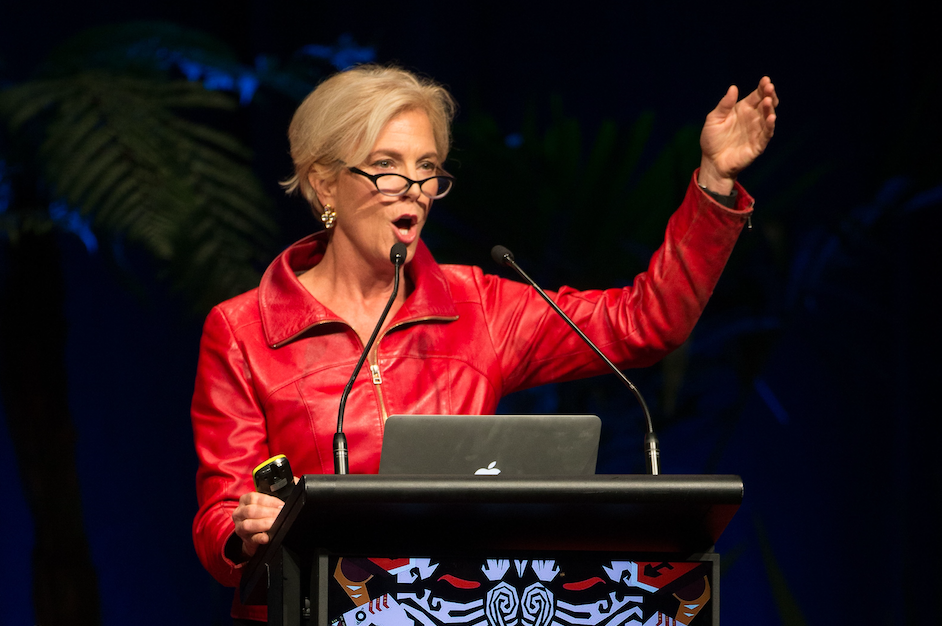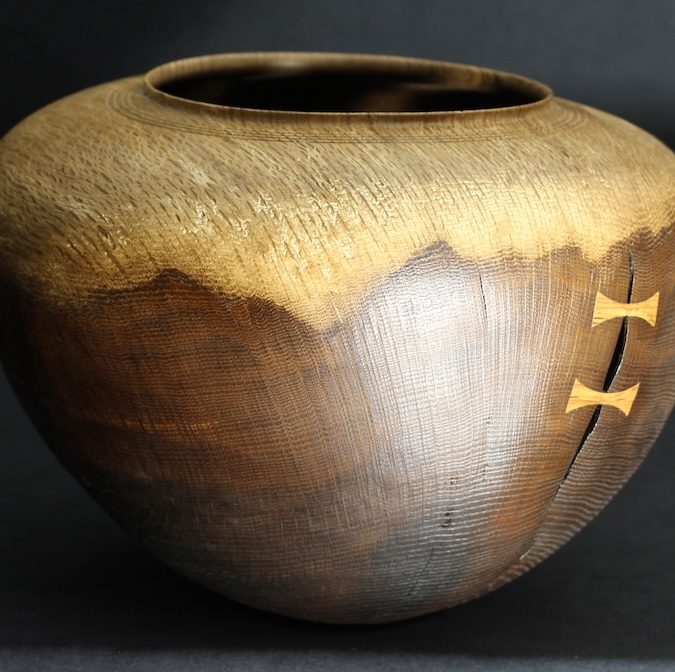
Sunny Bates, CEO of Sunny Bates Associates and a director of Kickstarter and Creative Capital, an advisory board member of MIT Media Lab, and a Brain Trust member of TED Conferences, is a laser beam of positivity and focus. She speaks with an enthusiasm and energy that makes me want to become ‘productive’ and ‘mindful’, to do yoga and start networking over herbal tea in the early hours of the morning.
At this week’s Tripartite Economic Summit – a meeting of delegates, thinkfluencers and persons-of-note from sister cities Auckland, Guangzhou and Los Angeles – Bates gave a talk about the economic power of arts and culture, and the global networks that generate and support creativity in the digital age.

“The economic driver of the future isn’t a factory or a piece of technology or software, it’s actually networks,” she says to an audience which seems mostly interested in factories, technology and software.
“It’s networks that produce art and culture, and are critical drivers in a 21st century economy. So the cities and regions that are attracting and retaining the producers of art and culture, and support their networks, will be the economic winners this century.”
She talks about William Kentridge’s Triumphs and Laments, a 550-metre frieze that currently runs along one side of the Tiber River in Rome. The frieze is not painted, rather the image has been rendered by washing decades of dirt off the wall, so it will disappear as the walls become covered in filth again.
Bates says that, unlike the Seine which plays a major part in life in the centre of Paris, the Tiber is long-neglected and the city has been trying to revive the river as a public space. “They didn’t build a stadium, they didn’t build a factory,” Bates says, “they commissioned a massive art project.”

Triumphs and Laments, the largest public art project in Rome since the Sistine Chapel, is important for Bates not just in its economic outcomes – it has brought both a revitalisation of a city neighbourhood and a new source of tourism for Rome – but in its production. Triumphs and Laments is the result of a global network: A South African artist, commissioned by a Roman arts organisation, with funding from mostly US-based backers on the US-based platform Kickstarter (where 483 backers pledged US$95,000), and then executed with the help of 100s of local volunteers back in Rome.
“Networks know no borders,” she says. “That’s their power.”
Another example: Wrapped Reichstag by Christo and Jean-Claude, where they wrapped the former centre of the German Empire in Polypropylene for 14 days in Berlin in 1995.
“It was at once a work of art, a cultural event, a political happening and ambitious piece of business,” she says. “It got Berlin into more a celebratory mood than anything since the fall of the wall. Crowds gathered day and night to gawk and many people think that this was the beginning of this 20 year ascent to Berlin becoming the cultural mecca of Europe. It is the place people want go and live and be in Europe. You make these investments and you don’t have any idea what will come from it.”
“Culture begets networks beget culture,” she says.

When I speak to her after the talk, I ask why investment in creative pursuits seems to be so often viewed as unnecessary or indulgent.
“The global lingua-franca right now is the language of business,” she says, “and I think that in fact the language of culture is a much richer, more nuanced, more interesting language.”
Bates says that the language of culture is expressed by, and becomes an economic driver through, networks. She talks about networks as loose, shifting connections of ideas, of people, of capital, and of support.
“An art project is a network,” she says. “An idea is a network. Ideas are clustered and they don’t happen alone, they happen in networks. Steven Johnson talks about liquid networks. You want the networks to become more and more liquid because then they meld together and then great things emerge from them. And then they’re supported and the resources begin to coalesce around them and that’s how great stuff happens.”
So, in an increasingly commercial world, how do you foster that clustering, that liquidity, that melding?
“You need places for people to come and muck around and get to know each other and hear and share ideas,” she says. “You need places that are open, almost like third spaces that are home but are not work. Those things are very important. And being comfortable that something’s going to come from it by just getting started.”

I tell her that sounds great, but how in Auckland, like in cities around the globe, a return from people with capital seeking the experiences of density and culture and all the good things that come with urbanisation, but the resulting rise in property prices often forces out the people that generate the culture that make living in a city desirable. If gentrification is inevitable, how do we maintain the availability of spaces for creative activity that doesn’t necessarily have obvious economic outcomes?
“Gentrification is really tricky because what you want is to have new people be able to come in, but you don’t want a monoculture. A monoculture is deadly,” she says. “You get a real vibrancy when you get this mix of culture and ideas and backgrounds and incomes.”
She says for arts and culture to thrive as an economic driver, you need government and public support, not just in funding, which can come from a number of sources, but in public policy and infrastructure so that people can live among people that are different to them and engage in art and culture which maybe, just maybe, will pay off economically like Triumphs and Laments or Wrapped Reichstag did.
“It’s hard,” she says. “You have to be really really vigilant.”




